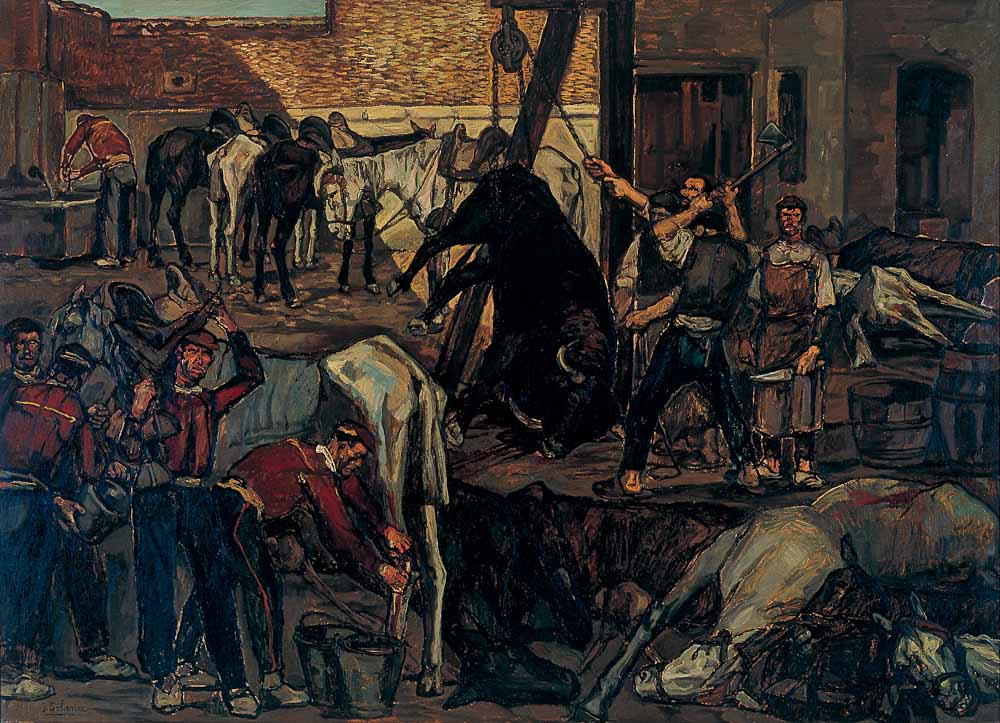
José Gutiérrez Solana (Madrid, 1886-1945)
The Slaughterhouse
ca. 1924
WORK INFORMATION
Oil on canvas, 145 x 202 cm
OTHER INFORMATION
Signed at the lower left corner “J. Solana”
Solana devoted much of his literary and pictorial output to the world of bullfighting. He revealed a certain degree of inconsistency in that some of these works offer an overt criticism of the harsh, pitiless nature of bullfighting but on the other hand the artist felt a powerful attraction for this symbolic universe. For Solana the bullfighters were heroes in their constant confrontations with death. He depicted them as arrogant, brave and strong in an interpretation that undoubtedly involves an autobiographical element. Solana’s scenes of bullfighting are devoid of excessive drama and solely make use of the visual qualities that the subject matter offered him.
In The Slaughterhouse he offers a critique of the darkest side of this particular universe, presenting the cruelty and harshness of bullfighting through the death of the bull and of the horses, as he did in a text on the same subject: “The door to the bull pen is a wide, heavy one painted red like the barrier that runs round the ring. Next to the shed for the bulls and the stables for the horses is the patio where they skin them and where a number of large, very solid, numbered cases are to be seen […]. A few spadefuls of earth have been thrown over the carcasses in order to stop the blood flowing and to cover the unpleasant sight of the innards. Fastened to the wall are some large containers and kitchen buckets. This is the first-aid point for horses. When a horse comes in […].”
Ignacio de Zuloaga and Darío de Regoyos had already depicted this subject with some iconographical differences. Solana, however, brings the viewer much closer to the stark reality of Spain at that period.
The prevailing tones in this canvas are yellows, browns and blacks, while the composition is structured in the form of various superimposed episodes: in the immediate foreground the wounded horses are tended next to the dead, half-buried ones; in the centre is the principal motif of the dead bull that is about to be cut up with
an axe; while in the background, providing a contrast of tone, is the group of reserve horses, ready to be mounted. This is a vivid scene filtered through Solana’s tragic vision that here gives rise to a lifelike depiction of enormous emotional and visual impact.
María José Salazar
